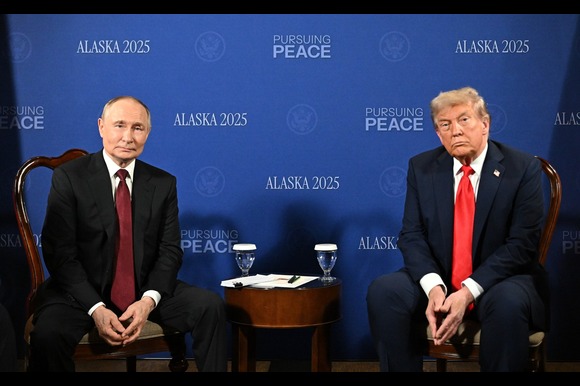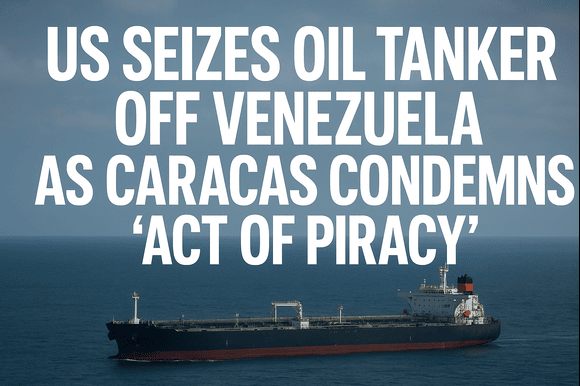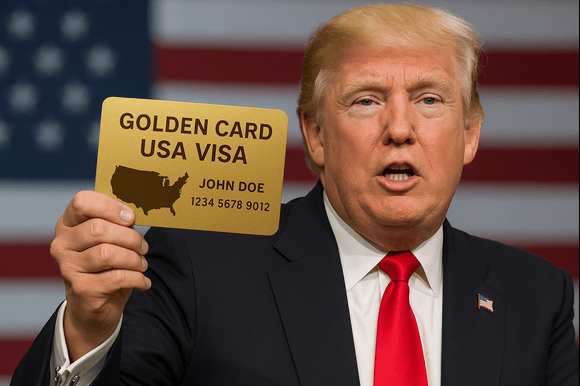
By kremlin.ru
There was no deal in Alaska — a likely, and in some quarters, even a preferable outcome given the absence of Ukrainian President Volodymyr Zelensky. However, U.S. President Donald Trump’s shift away from pushing for an immediate ceasefire — a move he had previously signaled support for — has caused serious concern in Kyiv and across European capitals.
For Ukraine and its European allies, the demand has remained consistent: an unconditional ceasefire must precede any broader peace talks. But Trump’s position now appears to align more closely with that of the Kremlin. Russia has long maintained that a ceasefire should come only as part of a comprehensive political settlement that incorporates Russian security interests — a framework that, in effect, requires Ukrainian capitulation. Trump’s latest statements suggest he may have accepted that logic.
“The best way to end the horrific war between Russia and Ukraine is to go directly to a peace agreement,” Trump wrote on his Truth Social platform, adding that ceasefires “often times do not hold up.”
This approach contradicts Ukraine’s core condition for negotiations and undermines recent European diplomatic efforts. It also benefits Russia’s President Vladimir Putin, who has made it clear he views the battlefield momentum as being in his favor. By resisting a ceasefire, Putin buys more time to consolidate gains.
“If Putin’s military objective was to avoid immediate constraints on Russian operations in Ukraine, then he appears to have succeeded,” said Matthew Savill, Director of Military Sciences at the Royal United Services Institute.
At a brief appearance alongside Trump, Putin cautioned Ukraine and European nations not to “throw a wrench” into the progress made during the summit — though he offered no specifics. From the Ukrainian perspective, however, Trump’s apparent reversal may have undone the progress made during a week of intense diplomatic outreach aimed at shaping the outcome in Alaska.
Trump’s shifting stance has once again drawn criticism for his tendency to mirror the views of the last person to speak with him — in this case, seemingly Putin.
In Europe, leaders watched anxiously on Saturday morning to gauge whether their recent diplomatic push had had any impact or if it had been set aside entirely.
As promised, Trump spoke with President Zelensky before the summit concluded. The two leaders reportedly held an hour-long call before European heads of government joined in. Zelensky described the call as “long and substantive” and confirmed plans to travel to Washington on Monday — his first U.S. visit since the contentious February meeting in the Oval Office.
The months since that visit have seen European allies work diligently to repair diplomatic fallout and better prepare Zelensky to engage with a White House seen as increasingly unpredictable.
“I am grateful for the invitation,” Zelensky posted online, adding that “it is important that America’s strength has an impact on the situation.”
However, following Trump’s Truth Social post, Zelensky’s tone shifted noticeably.
“Killings must stop as soon as possible,” he wrote. “The fire must cease both on the battlefield and in the sky, as well as against our port infrastructure.”
European diplomats — sometimes described as “Trump whisperers” — resumed their outreach efforts on Saturday, reiterating Ukraine’s right to shape its own future and expressing careful appreciation for Trump’s involvement.
“President Trump’s efforts have brought us closer than ever before to ending Russia’s illegal war in Ukraine,” said UK Prime Minister Sir Keir Starmer. He praised the “openness” of both the U.S. and Europe in discussing “robust security guarantees” for Ukraine as part of any potential agreement.
Yet those guarantees remain vague. While Europe has taken on a leading role in supporting Ukraine militarily, economically, and diplomatically, officials on both sides of the Atlantic acknowledge that only the U.S. can provide truly credible long-term security assurances.
Italian Prime Minister Giorgia Meloni echoed this view, suggesting that future guarantees could be “inspired by NATO’s Article 5,” the alliance’s collective defense clause.
Reports indicate that alternatives to NATO membership, but equivalent in terms of commitment, were raised in the call between Trump and European leaders. Still, Trump’s apparent pivot has left governments scrambling to reassess their positions.
In London, officials sought to remain optimistic.
“If you can get that all done — a ceasefire and a peace agreement — in one go or in quick succession, that’s obviously a good thing,” said a senior Downing Street source. “But we all want to see the fighting stop.”
Trump’s reluctance to push for an immediate ceasefire appears to have been shaped by Putin’s version of events, particularly his claim that prior ceasefires failed due to Ukrainian provocations. That narrative — widely disputed by Western observers — is gaining traction in Washington, to Kyiv’s dismay.
The Alaska summit has already provided Putin with several symbolic victories: a return to a global platform, even if surrounded by visible reminders of American military strength at Elmendorf-Richardson Air Base, and the avoidance of new U.S. sanctions — which Trump said he might not consider for “two or three weeks.”
As Zelensky prepares for his visit to Washington, uncertainty looms. What kind of reception awaits him? What direction will the White House now take?
When asked by Fox News host Sean Hannity what advice he had for the Ukrainian president, Trump gave a characteristically blunt response: “Make a deal. Russia’s a very big power — and they’re not.”




